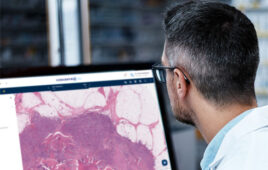 Utrecht University researcher Roelof Mol combined two techniques that were previously considered to be incompatible—the separation technique electrokinetic chromatography (EKC) and the detection technique mass spectroscopy (MS)—in a way that could more accurately determine the composition of medicines. He has used this approach to develop an extra quality control mechanism for the active ingredient and excipients in medicines. With this, the chance of a toxic substance ending up in a medicine will be reduced considerably. Mol applied the combined technique to impurity-profiling, during which contaminants in pharmaceutical samples are analyzed. It proved possible to measure contaminants in medicines to within the 0.1% (m/m) level, which means the method satisfies official sensitivity requirements.
Utrecht University researcher Roelof Mol combined two techniques that were previously considered to be incompatible—the separation technique electrokinetic chromatography (EKC) and the detection technique mass spectroscopy (MS)—in a way that could more accurately determine the composition of medicines. He has used this approach to develop an extra quality control mechanism for the active ingredient and excipients in medicines. With this, the chance of a toxic substance ending up in a medicine will be reduced considerably. Mol applied the combined technique to impurity-profiling, during which contaminants in pharmaceutical samples are analyzed. It proved possible to measure contaminants in medicines to within the 0.1% (m/m) level, which means the method satisfies official sensitivity requirements.
This article was published in Drug Discovery & Development magazine: Vol. 10, No. 11, November, 2007, pp. 16.
Filed Under: Drug Discovery




